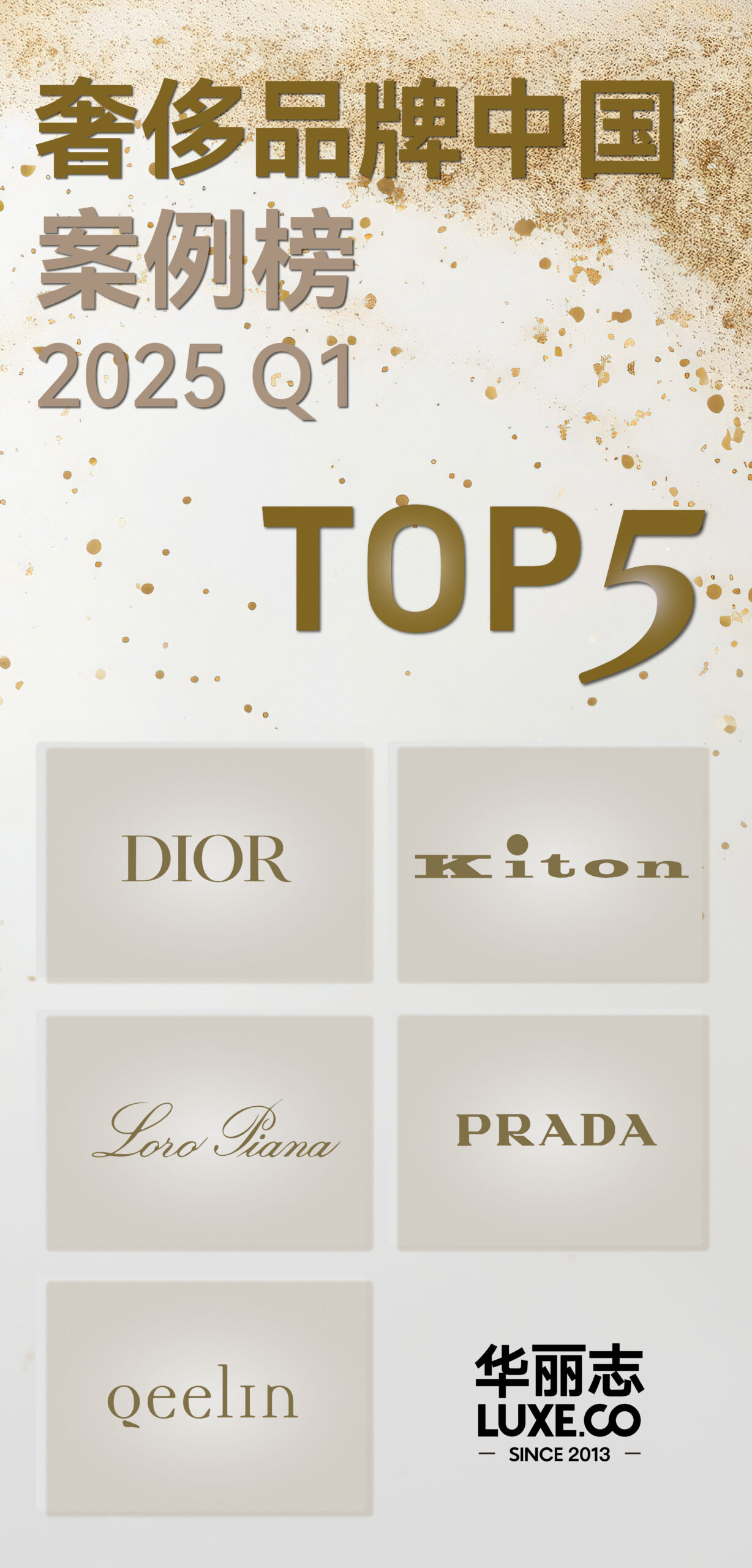The renowned Italian luxury brand Loro Piana, famous for its exquisite cashmere garments, recently announced the winners of the 9th and 10th editions of its “Gift of Kings® Cashmere Award.” Twelve herders from Otog Banner in Ordos, Inner Mongolia, received this prestigious honor, with all award-winning cashmere sourced from the Albas White Cashmere Goats.
Among them, Li Zhanqiang and Yue Fang provided record-breaking cashmere with a fiber diameter of just 12.8 microns—less than one-fifth the thickness of a human hair.
Loro Piana praised the fiber, stating: “Albas cashmere is the finest cashmere in the world, a rare ‘gem of fiber.’”
So, what makes Albas cashmere from Otog Banner stand out above all others? This Luxe.CO article investigates the story behind it.
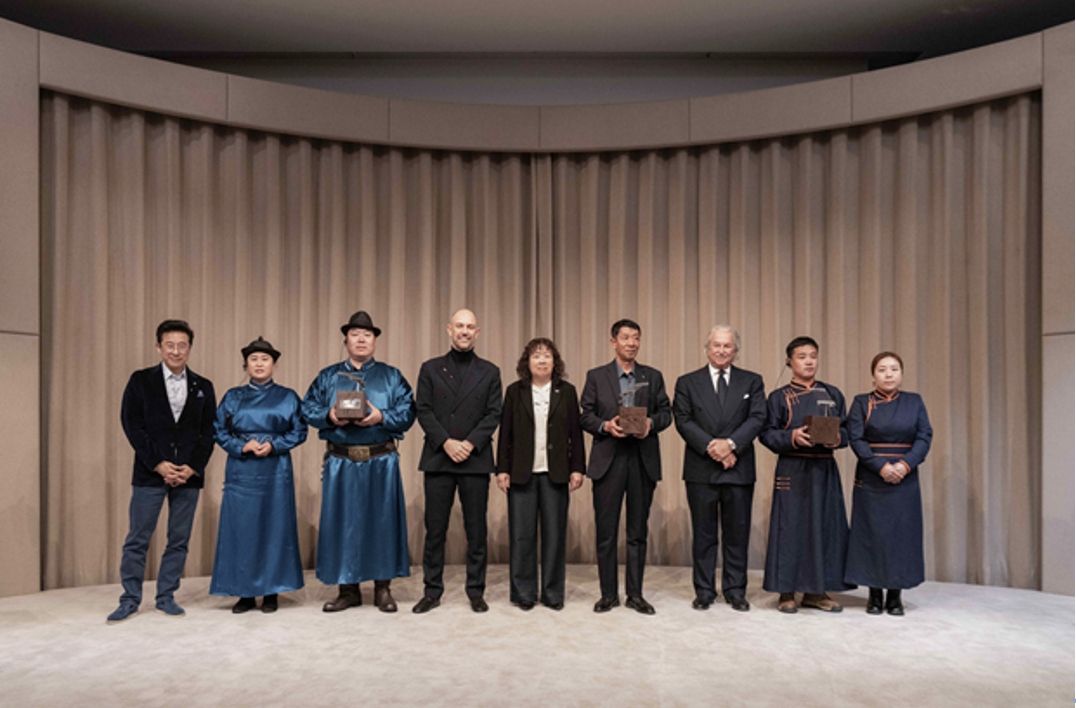
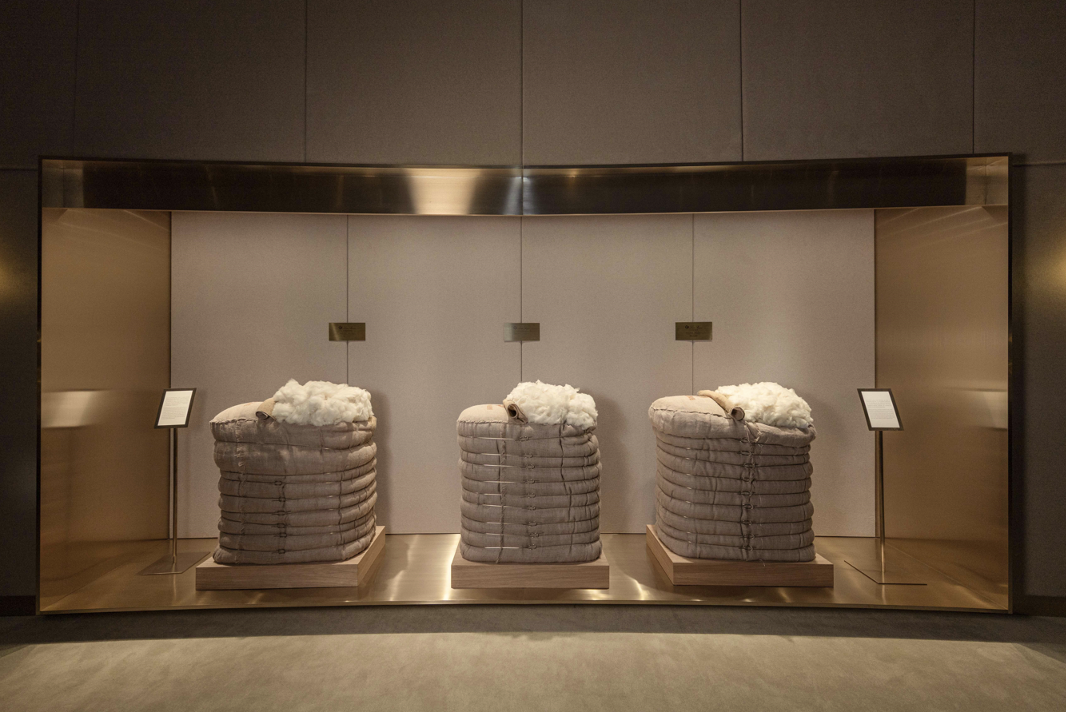
The Noble of Ordos Cashmere – Albas White Cashmere
To reach the home of Albas cashmere in Otog Banner, one must travel deep into the mountains along the base of the Wurendushi Grand Canyon.
Ancient rock carvings depicting various goat figures, especially abundant in number, can be seen on the canyon’s rock surfaces. These goats are the very breed that produce Albas cashmere. Archaeological studies suggest these petroglyphs date back over 4,000 years, attesting to the ancient lineage of the Albas cashmere goat.

Located on arid steppe land, Otog Banner experiences a harsh, dry climate characterized by strong winds, sandy terrain, and extreme temperature differences between day and night. Winters are long, bitterly cold, and dry, with nighttime temperatures plunging to -30 to -40°C (-22 to -40°F), while summers are short, hot, and sparse in rainfall, with the annual high reaching 36.4°C (97.5°F).
Albas cashmere goats, raised in these extreme and unforgiving conditions, have pure white coats. Their secondary hair follicles—those that produce the soft undercoat—are smaller than those of average goats, resulting in cashmere fibers that typically range from 13 to 15 microns in diameter.
The cashmere honored in this year’s Loro Piana “Gift of Kings®” award showcased both exceptional fineness and length. According to the brand, “its fineness surpasses that of baby cashmere, while maintaining the standard length of adult cashmere.”
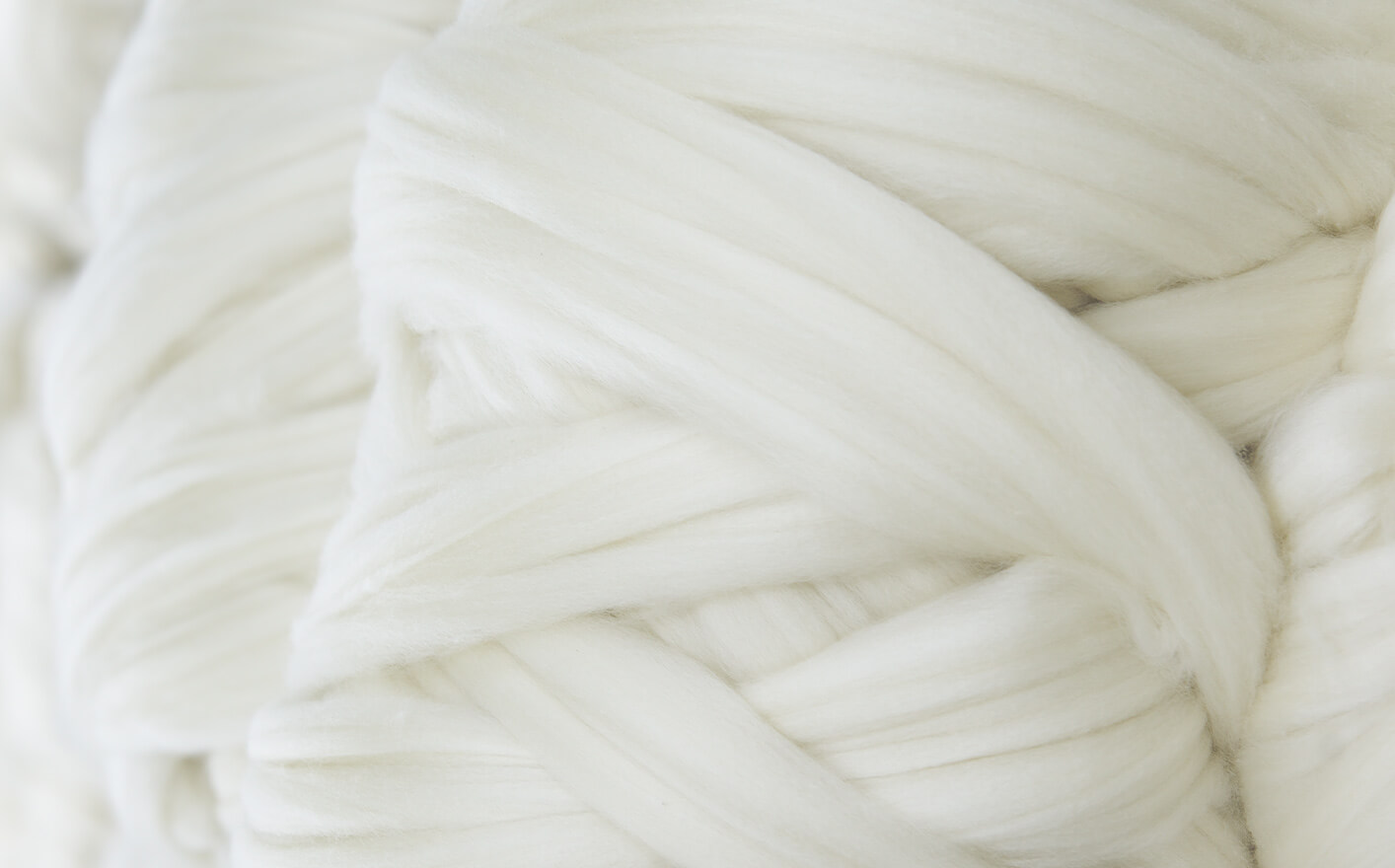
From 1985 to 1987, Albas cashmere won the “Italian Zegna International Cashmere Award” for three consecutive years.
In 2001, the Albas cashmere goat was listed as a Class I protected breed in the first release of the Ministry of Agriculture’s “National List of Livestock and Poultry Genetic Resources.”
Following the development of large-scale production, Albas cashmere became the primary raw material for the well-known “Ordos” cashmere products and is also used by international luxury brands such as Hermès, Louis Vuitton, and Loro Piana.
Notably, in 2006, the Ordos Group launched its high-end brand “1436,” named after the raw material specifications of Albas baby cashmere. Each fiber from the Albas Baby Cashmere Goat averages less than 14.5 microns in diameter and exceeds 36 millimeters in length.
In 2008, 1436’s Albas baby cashmere shawls and other products were selected as official Chinese state gifts and have accompanied national leaders on foreign visits. The brand has also been the designated supplier of national gifts at major international events including APEC and the G20.

Above: 1436 Brand — ZhiZhen Collection
The Battle to Preserve the Albas Cashmere Goat
The Albas cashmere goat, a precious livestock breed, once faced a serious crisis.
In the 1960s and 1970s, herders were caught in a dilemma: should they continue to raise purebred goats passed down from their ancestors, or pursue higher yields through crossbreeding with foreign breeds?
At the time, there was little awareness of the importance of preserving genetic purity. Influenced by a market that prioritized cashmere yield over quality, many herders opted for the latter, which led to a significant drop in quality. The fineness of cashmere, once around 14–15 microns, surged to 17–18 microns.
Today, the market trend has reversed: “quality over quantity” has become the dominant principle. The fineness, length, and density of the fibers now determine the value of cashmere. A difference of just a few microns in fiber diameter can result in multiple times the price difference for the final product.
In 1983, Otog Banner took decisive action by investing in the establishment of the Albas Cashmere Goat Breeding Farm (now Inner Mongolia Yiwei White Cashmere Goat Co., Ltd.). Purebred Albas goats were preserved only in remote and underdeveloped areas. The breeding farm introduced the first group of purebred Albas goats from the Wurendushi Mountains and implemented a strict “only outbound, no inbound” policy to prevent genetic contamination through crossbreeding. In 2008, Otog Banner designated the Wurendushi Gacha in Qipanjing Town and Bayinwendur Gacha in Mengxi Town as official Albas Cashmere Goat Conservation Zones.
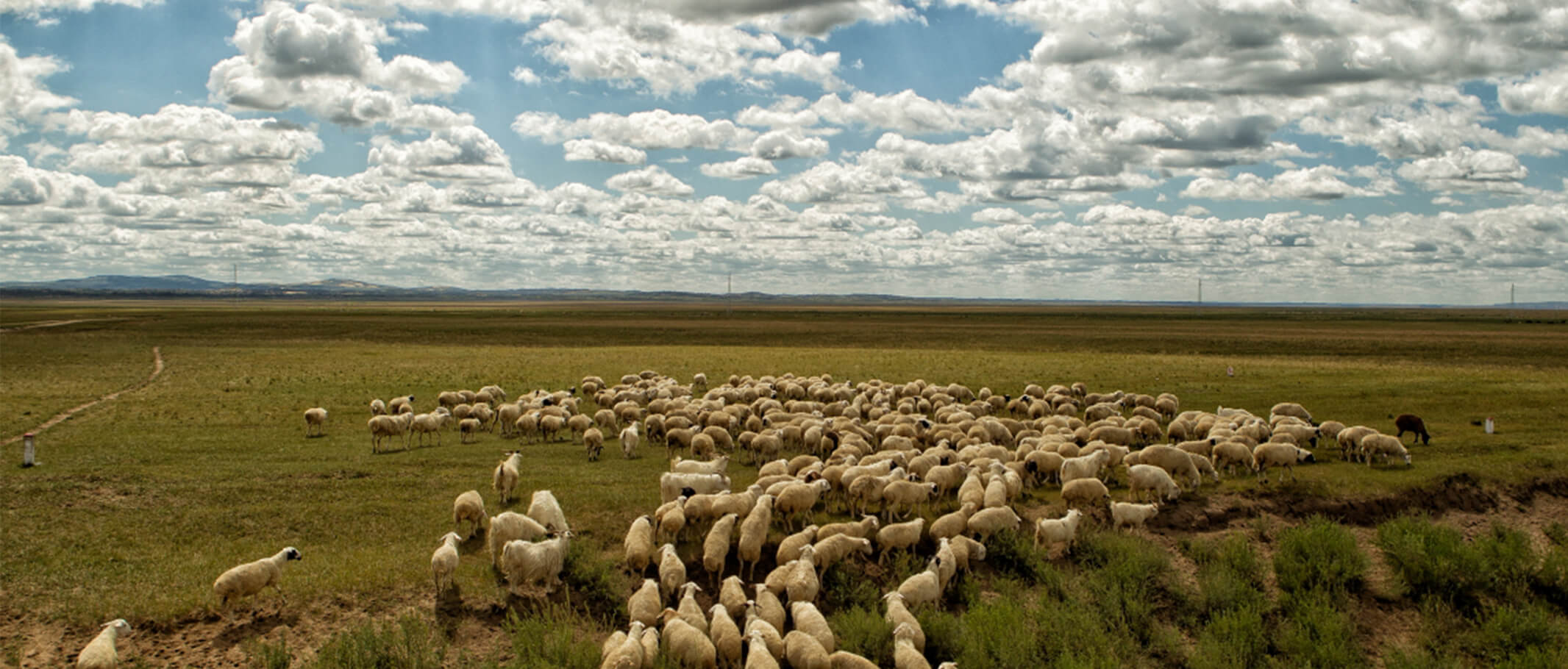
This marked the creation of a rigorous preservation system for Albas cashmere goats in Otog Banner. Each breeding goat at the farm has a digital record, and multiple herd stations have been established in the pastoral regions, managed by hired local farmers and herders. These stations continuously monitor the quality of the cashmere in real time.
Through an ear-tag tracking system, each breeding goat’s genetic profile and data from every stage of growth can be verified and traced. Herders follow standardized grazing and feeding plans, recording the growth conditions of each goat daily to ensure consistent quality.
Otog Banner has also partnered with universities such as China Agricultural University and Inner Mongolia University to conduct research. By collecting samples from fetuses at various stages of development and analyzing hair follicle growth, they aim to uncover scientific methods for improving both yield and quality of cashmere.
With the use of technologies like artificial insemination, the number of high-quality breeding goats continues to rise. However, this also introduces new challenges: traditional extensive grazing methods can no longer keep up, and the high cost of elite breeding goats discourages some farmers and herders from investing in selective breeding.
To address this, the breeding farm has led local herders in transitioning to more refined breeding practices. In collaboration with the government and businesses along the cashmere purchasing and processing chain, they established subsidy programs to encourage farmers to raise premium goats. Breeders who meet the fineness standards receive financial rewards.
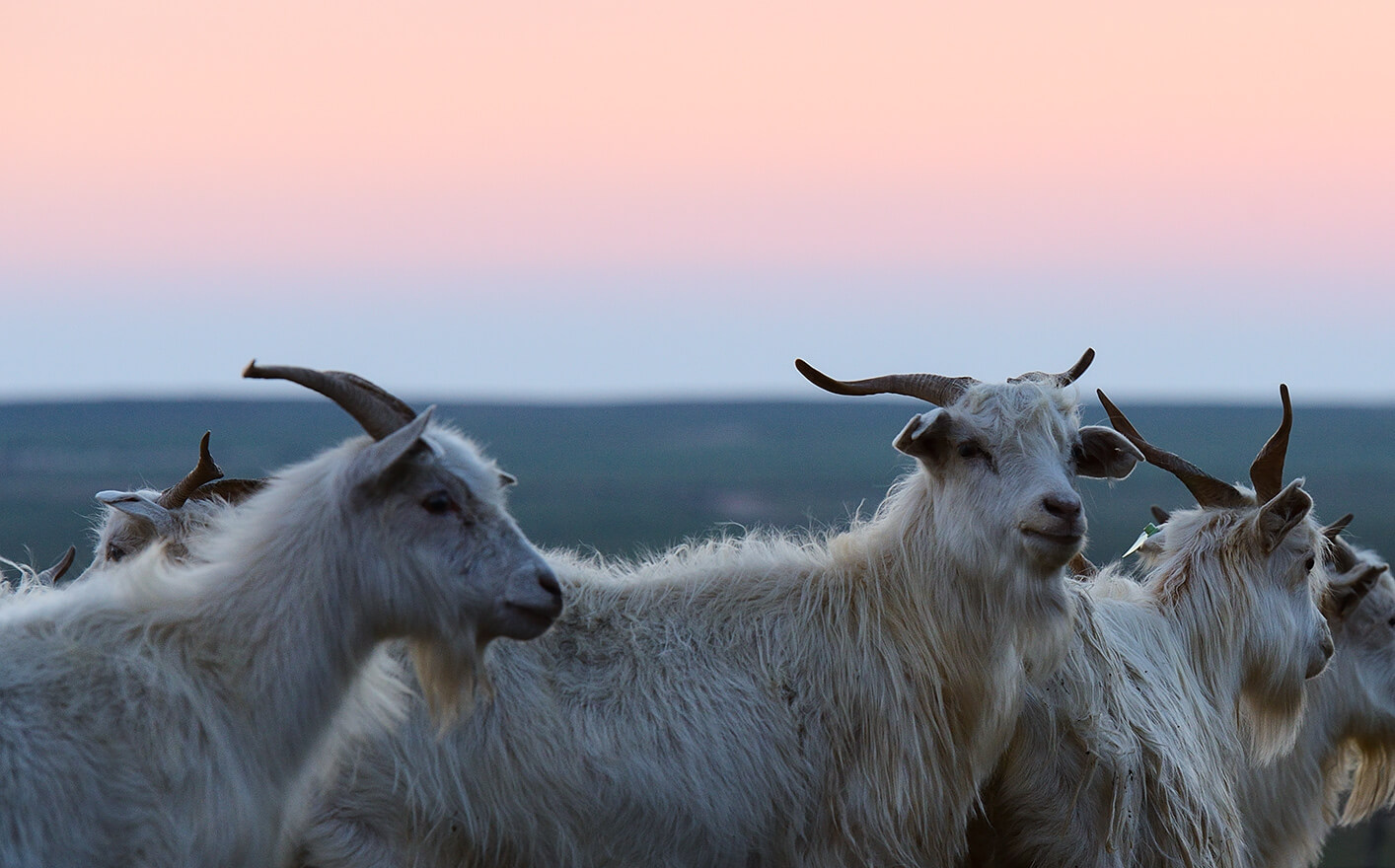
Siqing Bilige, a winner of the 9th edition of the Loro Piana “Gift of Kings® Cashmere Award,” raises over 500 Albas cashmere goats. His herd produces more than 700 jin (approx. 350 kg) of cashmere annually, with fiber fineness generally under 14.5 microns. Thanks to the “quality-for-premium” subsidy model, he earns about RMB 200,000 [approximately USD 27,600] more per year compared to selling average cashmere.
In interviews with Ordos News and the official platform “Otog Release,” Siqing Bilige said: “It used to be extremely difficult to find cashmere with a fineness below 15.5 microns. Now, over 80% of my family’s cashmere is under that threshold, with the finest even falling below 12 microns. This improvement is all thanks to government guidance on breed improvement and better farming techniques—the quality of our cashmere keeps getting better.”
“These little ones are truly money-makers,” he added. “After rigorous breeding, Albas goats are in high demand from cashmere companies. When our fiber meets the required standards, we also receive quality-based incentive subsidies.”
From Traditional Grazing to Industrial Transformation
In the past, herders mostly raised goats independently, household by household. Each family had to build their own pens, construct hay sheds, and purchase machinery. After deducting costs such as feed, equipment, and disease prevention, very little net income remained. If breeding and herd management fell behind, families even risked financial loss.
Today, the government and enterprises in Otog Banner share both risks and benefits with herders by establishing a “collective grazing, shared prosperity” large-scale ranch model. Through joint household operations, equity-based partnerships, and collective economic cooperatives, farmers and herders convert grasslands, irrigated fields, cashmere goats, labor, and equipment into shares and invest in large-scale ranches.
Hao Guibin, Deputy Director of Otog Banner’s Agriculture and Animal Husbandry Bureau, told Farmers’ Daily: “After investing in large-scale ranches, herders not only receive dividends from livestock sales and cashmere profits but also enjoy a second round of dividends from value-added activities such as advanced processing, public services, brand premium pricing, and livestream e-commerce. This model achieves deep integration between small-scale herders and industrial development.”
Local herders report that since the cooperatives were established, the scale of Albas cashmere goat farming has expanded significantly. Just two people can now manage a flock of 5,000 goats. With large-scale operations, the cost of purchasing feed and other supplies has dropped substantially. The cashmere yield, lambing rate, and marketable livestock rate are all significantly higher than when herders operated individually, resulting in markedly increased income for shareholder herders.
Thanks to the organizational structure of the large-scale ranches and the adoption of scientific grazing methods, such as livestock quotas based on pasture capacity and rotational grazing, the previous issue of overgrazing has also been effectively alleviated.
Currently, Otog Banner has fostered 1,056 eco-friendly family ranches and established over 20 large-scale “collective grazing, shared prosperity” ranches covering more than 10,000 mu (approx. 1,650 acres) each, along with 300 model demonstration ranches.
Otog Banner is home to approximately 1.8 million Albas cashmere goats, with an annual raw cashmere output of 1,200 tons. In 2024, the region’s total cashmere production value exceeded RMB 500 million [approximately USD 69 million], with 260 tons of dehaired cashmere exported.
| Image Credit: Courtesy of Loro Piana, 1436 Brand Official Website
| Editor: Zhu Ruoyu


